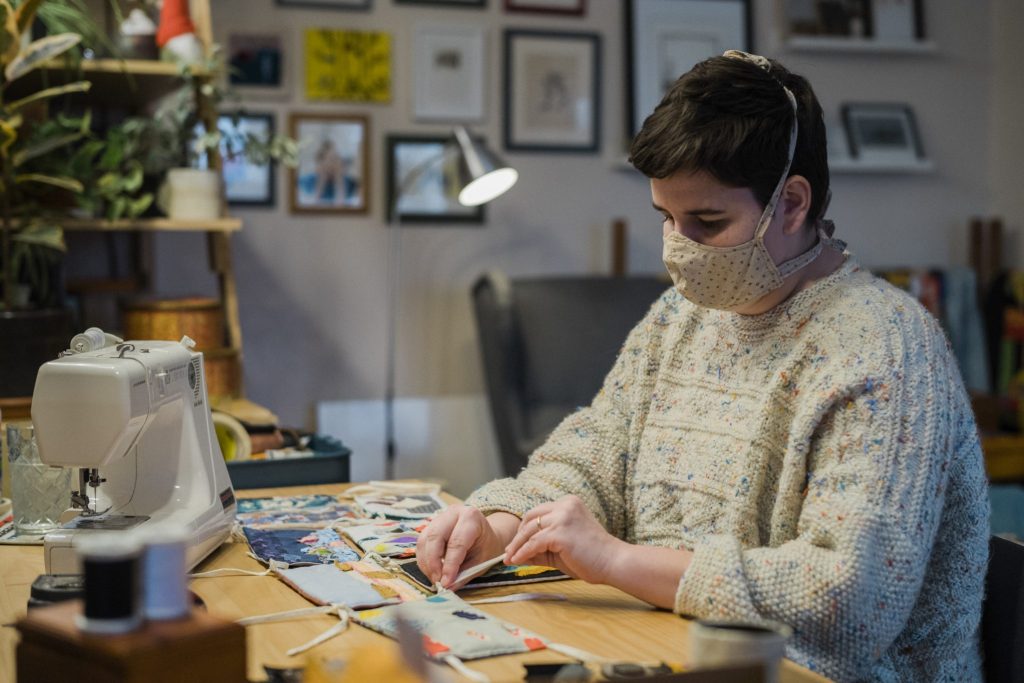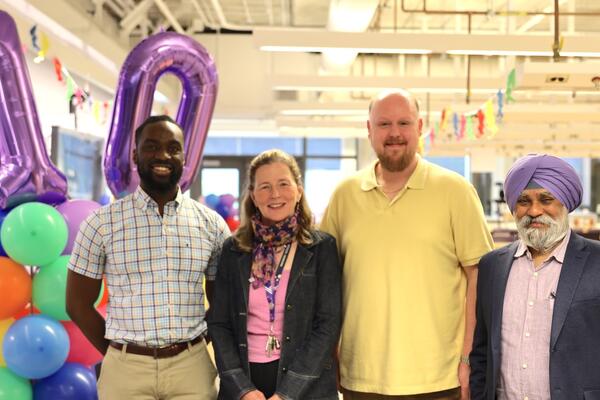
Thesis inspires artistic career
Recent grad's research work launches creative new horizons

Recent grad's research work launches creative new horizons
By Carol Truemner Faculty of EngineeringBrenda Reid laughs when she thinks about anticipating some downtime after finishing her architecture master’s degree last spring.
Since graduating, Reid (BAS ’19; MArch ’21), has served as an Artist in Residence for the Co-Create Residency in Guelph, Ontario, joined the KW Artists Co-op where she has studio space, and led Kitchener-Waterloo Art Gallery architecture walking tours.
In September, she began teaching in Waterloo’s first-year architecture studio.
“Much of my thesis work resulted in thinking that offering public education around design and architecture is one of the most important things we can do,” says Reid, a nominee in the arts and culture category of the 2021 Oktoberfest Women of the Year awards.
Focusing on care in architecture for her thesis, Reid launched the From Behind the Mask community quilt project for people to artistically share their COVID-19 experiences. Individuals from three to 89 years old submitted 568 blocks in four different languages using a variety of mediums.

Brenda Reid ties quilt blocks together. Photo courtesy of Erik O'Neil.
Exhibited this past summer in Kitchener’s Homer Watson Gallery, the 25-foot-long quilt is now on display in the city’s Stanley Park Community Centre.
“The project was totally different from other types of work I’ve done,” Reid says. “I found it really fulfilling and really inspiring.”

Read more
The Pearl Sullivan Engineering IDEAs Clinic marks a decade of delivering experiential learning embedded in the real world and mentored by industry professionals

Read more
From AI-powered cap tables to complex valuation tools, Waterloo co-op students drive Carta’s innovation while shaping its engineering talent strategy

Read more
From co-op to community, grads offer insights and inspiration for the next generation of students
The University of Waterloo acknowledges that much of our work takes place on the traditional territory of the Neutral, Anishinaabeg, and Haudenosaunee peoples. Our main campus is situated on the Haldimand Tract, the land granted to the Six Nations that includes six miles on each side of the Grand River. Our active work toward reconciliation takes place across our campuses through research, learning, teaching, and community building, and is co-ordinated within the Office of Indigenous Relations.